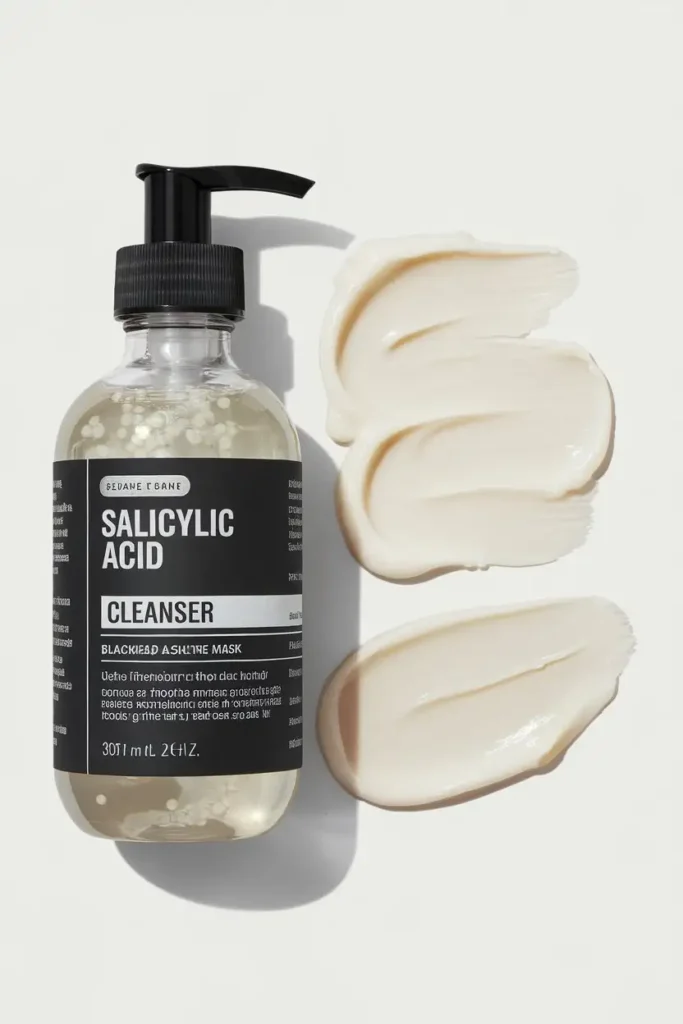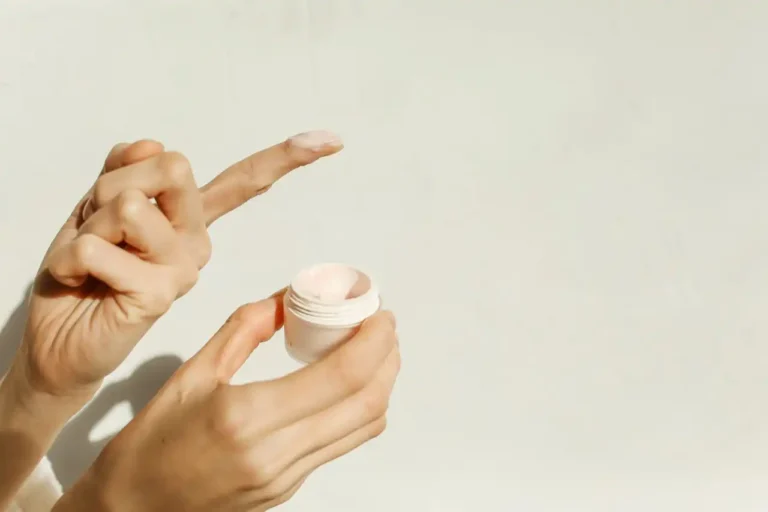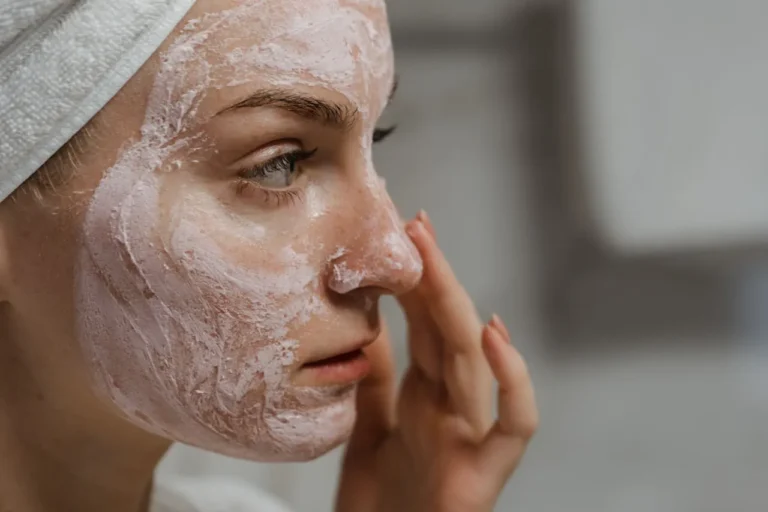5 Ways To Get Rid Of Blackheads: Effective Tips For Clear Skin
Blackheads can be a frustrating skin problem for many women.
These small, dark spots appear when pores get clogged with oil and dead skin cells. They often appear on the face, especially the nose and chin.
You can get rid of blackheads with the right methods and products.
This article will look at five effective ways to tackle blackheads and achieve clearer, smoother skin.
These tips are easy to follow and can help improve your complexion.
1: Salicylic Acid Cleanser

Salicylic acid cleansers are great for fighting blackheads. Look for a face wash with 0.5% to 2% salicylic acid.
This ingredient works by getting into your pores and clearing out oil and dead skin. For best results, use it once or twice daily.
2: Bioré Deep Cleansing Pore Strips

Bioré Deep Cleansing Pore Strips are a quick way to remove blackheads. You can use them once a week on your nose or other areas.
The strips pull dirt and oil from your pores. They work fast, and you’ll see results right after using them.
With regular use, these strips can make your pores look smaller over time. They’re easy to use and give your skin a deep clean.
3: Paula’s Choice Skin Perfecting 2% BHA Liquid Exfoliant

Paula’s Choice 2% BHA Liquid Exfoliant is a powerful blackhead-fighting product. It uses salicylic acid to unclog pores and remove dead skin cells.
This liquid exfoliant helps reduce the appearance of enlarged pores and fine lines. It can be used on all skin types, but it works best for normal to oily skin.
4: The Ordinary Niacinamide 10% + Zinc 1%

The Ordinary Niacinamide 10% + Zinc 1% is a great option for fighting blackheads. This serum helps control excess oil and reduces the look of pores.
It also improves skin texture and brightness. It can be used twice daily after cleansing your face. The formula is water-based and easy to apply.
Many users see good results in minimizing blackheads and improving their skin’s appearance. It’s an affordable choice that can make a real difference in your skincare routine.
5: La Roche-Posay Effaclar Purifying Foaming Gel Cleanser

This facial cleanser can help you combat blackheads. It’s made for oily skin and contains zinc to remove extra oil.
The gel formula is gentle and will not dry out your skin. It’s also free of alcohol and oil, making it good for sensitive skin.
Understanding Blackheads
Blackheads are a common skin issue that can be frustrating to deal with. They appear as small, dark spots on the skin’s surface and often show up on the face, especially the nose and chin.
What Are Blackheads?
Blackheads are a type of acne. They form when pores get clogged with oil and dead skin cells.
The top of the clog is open to the air, which causes it to turn dark. This dark color isn’t dirt—it’s just the oil reacting with oxygen.
You can usually see blackheads easily. They look like tiny black dots on your skin. Blackheads don’t hurt or feel sore like some other kinds of acne.
Common Causes Of Blackheads
Several things can lead to blackheads. Your skin naturally produces oil to stay healthy, but sometimes, it produces too much.
This extra oil can mix with dead skin cells and clog your pores.
Hormones play a big role, too. They can make your skin produce more oil, especially during your teen years, before your periods, or during pregnancy.
Some makeup and skin products can also clog pores.
Not washing your face enough can allow oil and dead skin to build up.
However, washing too much can also cause problems by drying out your skin.
Blackheads vs. Sebaceous Filaments
As someone who has struggled with achieving clear skin, I know firsthand how frustrating it can be to deal with blackheads and sebaceous filaments.
While these two skin concerns may look similar, they are actually quite different in nature.
Let me explain the key distinctions between blackheads and sebaceous filaments so you can better understand what you’re dealing with and how to treat them effectively.
First, let’s talk about blackheads.
Blackheads are a type of acne that occurs when hair follicles become clogged with excess oil, dead skin cells, and bacteria.
When exposed to air, these clogs oxidize, turning a dark color, hence the name “blackheads.”
Blackheads are typically larger and more noticeable than sebaceous filaments and can be more difficult to remove.
On the other hand, sebaceous filaments are a normal part of your skin’s structure.
They are tiny, hair-like strands that line the inside of your pores, helping channel sebum (the natural oil your skin produces) to the surface.
Sebaceous filaments are usually lighter in color than blackheads, ranging from white to yellowish or grayish.
They are more prevalent in areas of the face with higher concentrations of oil glands, such as the nose, chin, and forehead.
One of the main differences between blackheads and sebaceous filaments is that blackheads are a form of acne, while sebaceous filaments are a normal and necessary component of healthy skin.
Blackheads occur when there is an overproduction of oil and a buildup of dead skin cells, leading to clogged pores.
On the other hand, Sebaceous filaments are not a result of poor hygiene or excess oil production; they are simply a part of your skin’s natural functioning.
When it comes to treatment, it’s important to approach blackheads and sebaceous filaments differently.
Blackheads can be treated with regular cleansing, exfoliation, and targeted spot treatments containing ingredients like salicylic acid or benzoyl peroxide.
These ingredients help unclog pores, reduce inflammation, and prevent breakouts.
Sebaceous filaments, however, do not require aggressive treatment. In fact, attempting to remove them forcefully can actually cause more harm than good, leading to irritation, redness, and even enlarged pores.
Instead, focus on maintaining a gentle, consistent skincare routine that includes cleansing, moisturizing, and sun protection.
You can also use salicylic acid or retinol products to help regulate oil production and clear pores.
It’s important to remember that visible sebaceous filaments are completely normal and do not indicate poor skin health.
Embrace them as a part of your skin’s natural texture, and don’t fall for the myth that you must eliminate them for your skin to be considered “perfect.”
Conclusion,
While blackheads and sebaceous filaments may appear similar at first glance, they are distinct skin concerns requiring different treatment approaches.
By understanding the key differences between the two, you can take steps to effectively manage your skin’s unique needs and achieve a clearer, healthier complexion.
Remember, the key is to be patient, consistent, and gentle with your skin and to embrace its natural beauty along the way.







